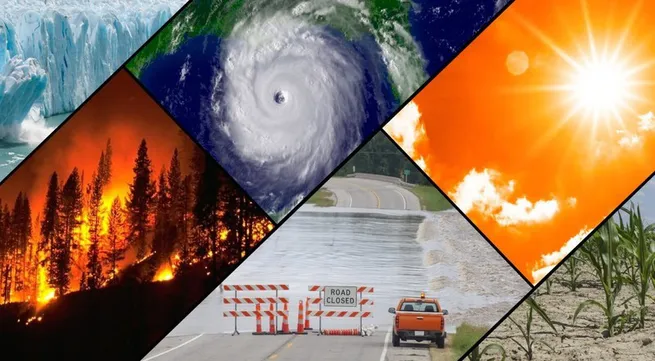Vietnam actively responds to climate change

The global problem requires the efforts of each country to respond as well as the close cooperation of the international community. As one of the countries most affected by climate change, Vietnam has made many active and flexible response efforts.
Climate change has a great impact on the living environment as well as human livelihood, thus becoming a serious challenge to the survival of mankind. According to the report on climate change in Vietnam, with the scenario of increasing temperatures and a sea level rise of 1m, Vietnam will probably lose 5% of its land area in the Mekong Delta region.
According to this study, if global temperatures rise 1.5° Celsius or 2° Celsius, the direct loss to Vietnam's GDP would be 4.5% or 6.7%, respectively.
Sea level rise also leads to a decrease in rice cultivation area, whereby a sea level rise of 60cm could lead to a more than 50% decrease in rice cultivation area in some localities, threatening the country’s food security.
General Director of the Vietnam Meteorological and Hydrological Administration Tran Hong Thai said: Advances in science and technology have significantly improved the accuracy of weather forecasts and early warnings to protect lives.
The future weather, climate and water cycle will be different from in the past. Centres for hydrometeorological forecasting will help seize the opportunities and address the associated challenges.
Currently, in the world, there are more than 30 meteorological and 200 research satellites, 10,000 manned and automatic surface weather stations, 1,000 upper-air stations, 7,000 ships, more than 1,100 buoys, hundreds of weather radars and 3,000 specially equipped commercial aircraft measuring key parameters of the atmosphere, land and ocean surface every day. These observations are then made freely available to every country in the world to provide early warning of fluctuating information about weather and hydrometeorology.
In fact, over the past few decades, industrialisation has increased greenhouse gas emissions into the atmosphere. As a result, the climate is changing, the Earth's temperature is increasing, and the sea level is rising, leading to more extreme weather events, such as floods and droughts. Therefore, forecasts and early warnings about natural disasters for sustainable socio-economic development need to be more precise and specific.
Discussing this issue, Deputy Director General of the Vietnam Meteorological and Hydrological Administration Hoang Duc Cuong said that in recent time, Vietnam has applied lessons learned from the reality in countries in the region and around the world on forecasting.
Specifically, the General of the Vietnam Meteorological and Hydrological Administration has issued decisions on the type, duration, and content of newsletters for units of the national forecast system, which emphasises all types of newsletters must provide information on the possible impact of weather, hydrological, hydrographic, and natural disasters on the environment, living conditions, infrastructure, and socio-economic activities.
Through the initial assessment, when adding information about the potential impact to the newsletter for forecasting natural disasters at different forecast periods, from seasonal forecast to monthly forecast, 10-day forecast and short-term reports of 1-3 days have helped directing agencies for natural disaster prevention and control at all levels to be more proactive in formulating and developing prevention and control plans as well as implementing disaster prevention and response plans.
Impact warning information also helps local authorities at all levels localize (space, objects) at risk of being affected by natural disasters, review key points to focus resources on areas, high-risk subjects help respond more effectively.
Tags:





